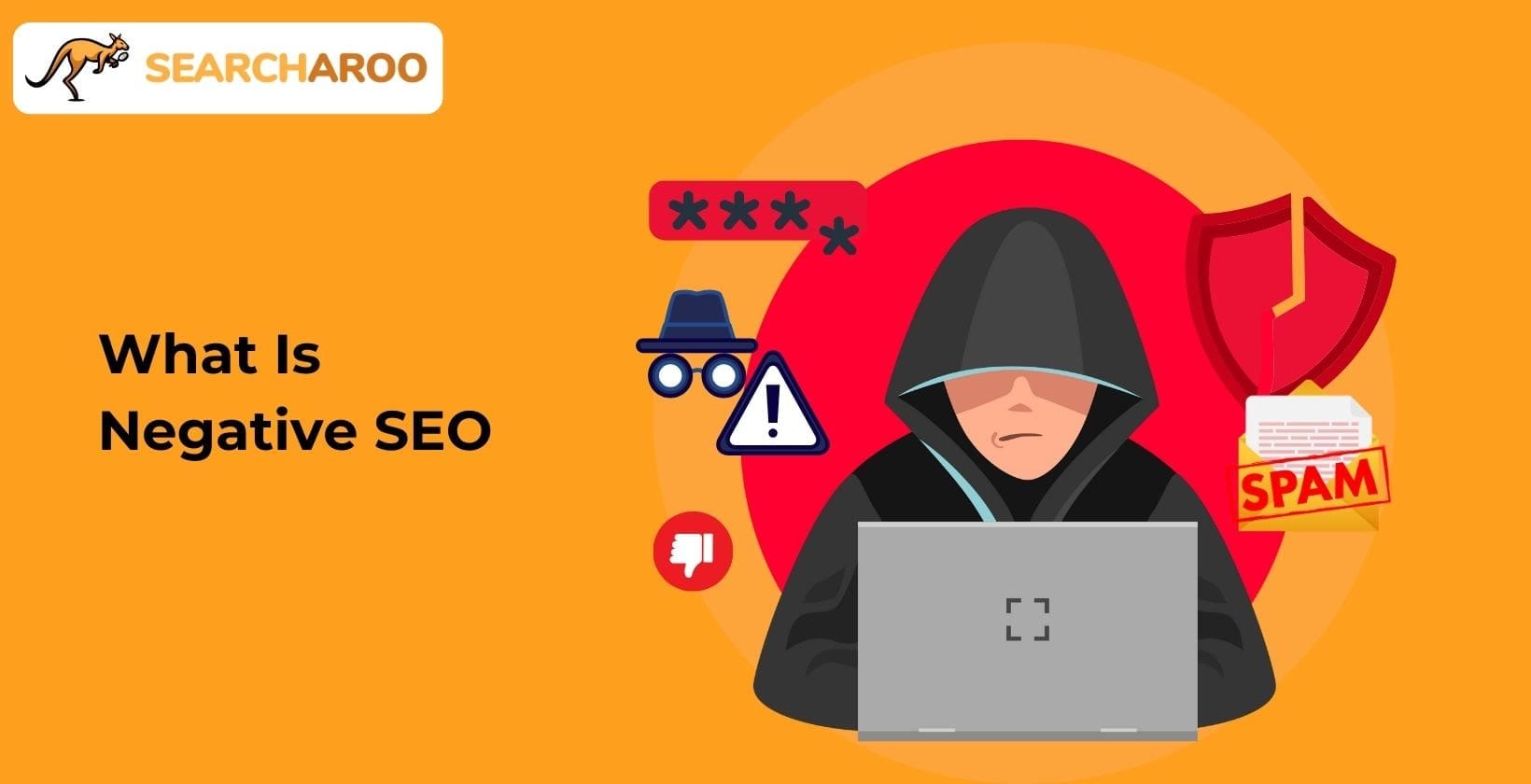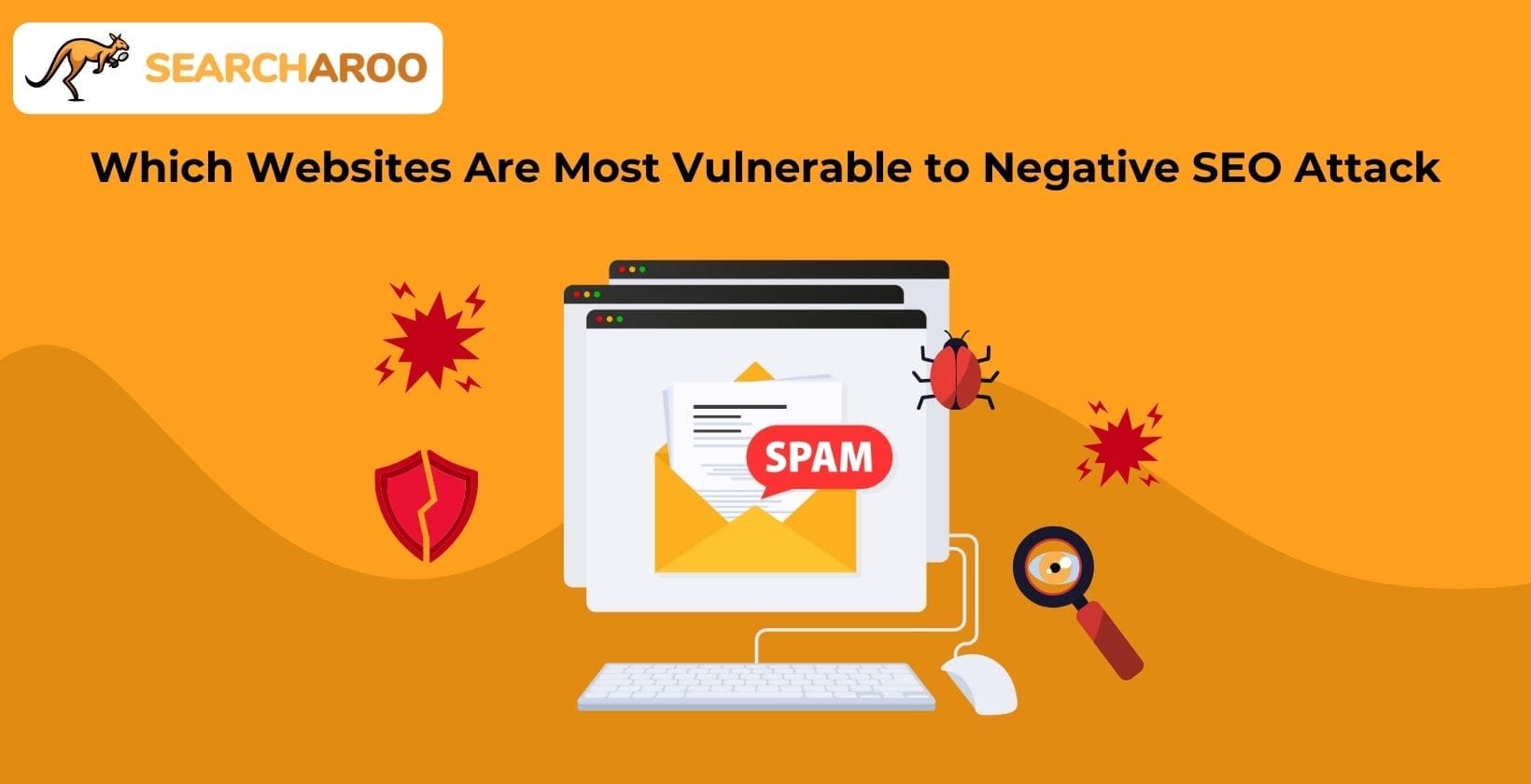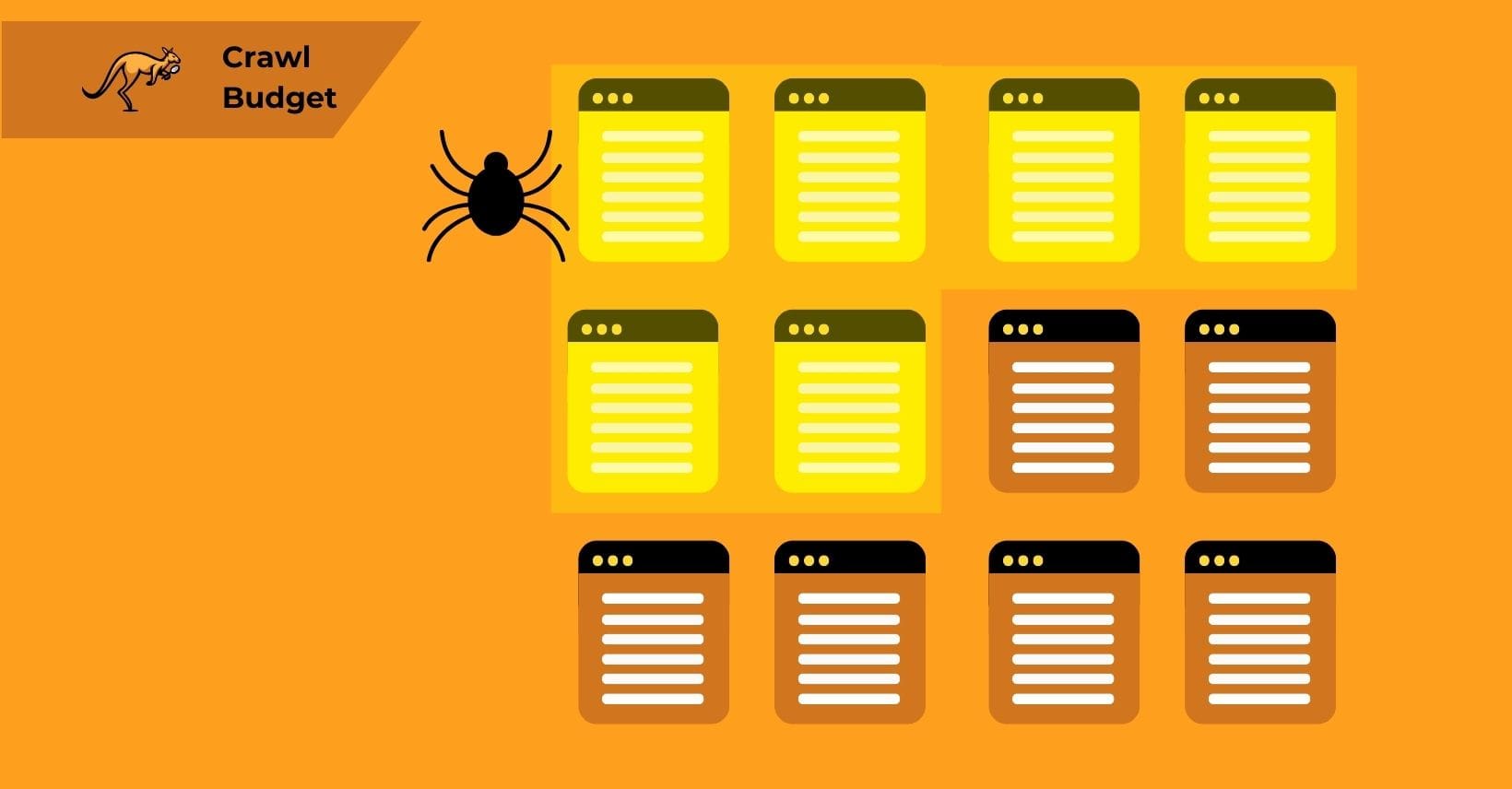Negative SEO, a topic often sparks debate in the SEO community, raises questions about its frequency and impact on website rankings. Usually identified by a marked sudden decrease in rankings, it prompts concerns over the potential harm it can inflict on a website’s visibility and the long-term effort required for recovery. The risk of becoming a target of malicious SEO practices grows, affecting even those who have not violated the rules.
Understanding the nature of Negative SEO, its types, and the vulnerabilities it exploits is vital for any webmaster. Equally important is recognizing the signs of an attack and knowing the steps to mitigate its effects. We will demystify Negative SEO, offering insights into its detection, prevention, and repair strategies, thereby equipping you with the knowledge to protect your site.
Let us start with Negative SEO, exploring its definition, manifestations, and the reasons behind its occurrence.
What Is Negative SEO?

Negative SEO employs black hat techniques to penalize target websites on Google, aiming to degrade their SEO value. It involves actions that lower a site’s rankings through spammy links, content duplication, and hijacking. Detecting negative SEO is hard, usually only by declining search rankings and organic traffic. With this in mind, you should know the best types of Negative SEO attacks and explore their mechanics and impacts.
The Best Types of Negative SEO Attack
You need to be aware of several different types of negative SEO attacks to properly understand how to keep yourself safe. Let’s go through the most common types of negative SEO attacks now.
Building Spammy Links
A common negative off-page SEO tactic is creating low-quality, or worse, fully spammy, backlinks all pointing to your website.
Backlinks are an important ranking element for Google. While high-quality, contextually appropriate backlinks improve your backlink profile and help you rank better, spamming backlinks from low-quality sites will be penalized.
A single spam backlink to a site will have little effect on its rankings. That is why link farms have a negative SEO effect on the target site, generating many spammy links that point to your site at once.
If Google discovers that the backlinks to your site are from link farms, the search engine assumes you are part of a link scheme, such as a paid backlink network.
That breaches Google’s Guidelines, and the search engine giant will penalize you. Sites that have been penalized often rank lower.
Worse, Google could fully delete you from its search results, ensuring that you do not appear in the results pages for user searches. This would make your web page unable to gain organic traffic from search results.
Website Hacking
One of the most expensive SEO strategies is website hacking. People use it, however, when determined to lower a site’s rankings by any means necessary.
If your website is hacked, you lose control of it, and the hacker takes control, allowing them to edit it as they see fit.
Once an attacker has gained control of your website, they may do whatever they want. That is one of the worst possible examples of a negative SEO campaign.
The assault might include bombarding your website with duplicate or low-quality material or flooding it with low-quality links, unnatural links, or toxic or suspicious backlinks pointing to your site, all built from unethical link farms or private blog network systems.
In the worst-case scenario, hackers can edit your robots.txt file so that Google bots entirely disregard your site. Therefore, Google will be unable to crawl and index your pages, meaning they will not show up in the SERPs!
Content Scraping
Scraping content is a major negative SEO strategy that can undermine your website’s reputation and online discoverability.
Original content is essential for demonstrating your knowledge and increasing your website’s authority. But what if someone steals your material? That is precisely what content scraping is.
Content scraping is simple. It entails copying material from your site (or just copying your entire website!) and posting it on several sites, generally PBNs.
This can be a problem because Google usually indexes only one version and completely ignores the copies found on other websites.
Normally, Google will rank the original version of the duplicate material and disregard the clones, but this is not always true.
Suppose the original material still needs to be indexed, and Google discovers one of the duplicates before the original. In that case, it will most likely rank the one crawlers find first.
As a result, scrapers frequently target recently released content for duplication. If they get in fast enough, they can use the duplicate content to steal a competitor’s rankings and get the competitor penalized as a thief.
Malicious Backlink Removal Requests
Your more unethical competitors who plan to outrank you based on backlinks will seek to undermine your backlink profile.
Such individuals may engage in extremely sketchy black hat SEO tactics to fully remove your valuable backlinks from external websites, lowering your site’s PageRank as a result.
They may contact webmasters, claiming to be you or a representative of your site, and request that hyperlinks to your site be removed from their own pages.
The more backlinks you lose, the more vulnerable your backlink profile becomes: both the number and the quality of your backlinks matter.
This may eventually cause your website to fall into the SERPs. Ranking drops like this are hard to defend from in advance, and such attacks are only usually noticed once several other sites have been tricked into removing your links.
Leaving Fake Negative Reviews
Positive feedback enhances your internet presence. Negative reviews might harm your internet reputation.
However, one of the first things your rivals will do is propagate false bad reviews for your business or products. Your malicious competition may overwhelm your website and social media sites with bad reviews.
Nobody wants to buy items or services from websites that have a high percentage of negative ratings.
As a result, fake negative reviews might substantially impact your traffic flow and conversion rate, particularly if you need to catch them quickly or outright ignore them.
Fortunately, Google’s identification of fake reviews is improving rapidly.
Should you buy Negative SEO Services?
Investing in negative SEO services to undermine competitors is a risky strategy with far-reaching consequences. Such actions compromise the integrity of your online presence. They can trigger severe penalties from search engines, which are increasingly skilled at detecting and punishing these tactics. The short-term advantages of negative SEO pale compared to the potential long-term damage to your brand’s reputation and the erosion of trust among your audience. Resources allocated to negative SEO could be more productively used in legitimate growth strategies that build lasting value and don’t leave you with bad karma, unlike some companies that offer negative SEO services.
Companies That Offer Negative SEO & Why They Should Be Avoided
Companies that offer negative SEO services operate on the fringes of ethical digital marketing, promising quick gains at the expense of others’ success. Employing their services risks your website’s search engine standing and aligns your business with fundamentally unethical practices. This association can tarnish your reputation and deter potential customers who value integrity and fairness in business operations. You should avoid these types of companies and focus on building a strong, ethical online presence and ensuring your website is not vulnerable to negative SEO.
Which Websites are Most Vulnerable to Negative SEO Attack?

Every time your site climbs the SERPs, you push another site down to make room. Considering that others can use negative SEO to undermine your efforts is unpleasant. Still, your site is in danger if you provide excellent services that could draw money or visitors away from someone else.
A negative SEO assault can happen on any website. Still, local companies and startups with few referring domains tend to be more at risk than others—the more limited your backlink profile, the greater the impact of low-quality or bad links.
Suppose half of your links are spammy, and you are a new site. In that case, Google crawlers will look at your backlink profile and conclude that you are trying to manipulate them. They will probably de-rank you as a result.
Rookie webmasters need to pay close attention to every backlink they obtain. This is also true when you hire a link-building business for its services.
Some website owners are cautious about engaging with large-scale paid link building because they have had bad experiences in the past with SEOs who used spammy practices that destroyed their site’s reputation rather than boosting and nurturing it.
Spammy links will influence your domain authority and rankings as your backlink profile expands.
It is always a good idea, though, to keep a close eye on your backlink profile’s referring domains and anchor text variety to ensure there is no sudden influx of spam and low-quality links creeping in.
How to Spot a Negative SEO Attack
Now that you have identified how negative SEO might harm your website, it is time to work out how to identify and defend against negative SEO attacks. Your site needs negative SEO recovery when you observe sudden ranking drops, discover unusual backlink patterns, notice decreased organic traffic, or receive manual action notices from Google Search Console that indicate potential link scheme violations.
Google Search Console: Your First Stop
Google can notify you if your website has been attacked if pages are not being indexed if there are search engine penalties if there are server connectivity difficulties, and so on.
The Google Search Console is your new best friend here. This single piece of software contains a huge number of vital tools.
You can adjust your email notifications from the Search Console by going to User Settings and selecting Email Preferences. Set up notifications to let you know if anything unexpected changes. Then, you will be warned as soon as anything slightly dodgy happens.
With the help of Google Search Console, you can keep a close eye on your site and avoid SEO attacks, especially when you catch them early.
Monitor Your Backlink Profile
Backlinks from low-quality sites with little domain authority, minimal relevance to your sector, or otherwise sketchy vibes should always be considered cautiously.
Notice a huge flood of these low-quality links. They might be from a link farm with the infrastructure to produce many links from multiple sites rapidly.
Suppose you have a new site with a high percentage of bad links. In that case, Google will likely suspect you are manipulating black hat.
Backlinks in the comment sections of blogs or forum sites used to be one method SEOs used to manipulate their site authority, but they are now also used to try to gain penalties for rivals.
Suppose you notice hyperlinks in older blogs’ comment sections with no topical relevance or traffic. In that case, someone may have included them maliciously.
Regular Site Audits
All site owners should have a regular site audit schedule in place anyway. If you do not have one yet, let this be the sign that it is time to set one up.
Regular site audits let site owners know when something changes, whether that is new links from high-authority linking domains or a flurry of manipulative links from a link farm.
There are many different website auditor tools available. Pick one you like the look of, and use it regularly to spot toxic links and concerning changes to your metrics at any time.
This usually involves clicking a “rebuild project” button and watching the progress graphs for a while. Your chosen tool should have detailed instructions on how to perform an audit.
How to Fix Negative SEO Damage
Recovering from a negative SEO campaign requires a methodical approach that begins with thorough backlink analysis followed by strategic removal actions. Negative SEO recovery involves identifying suspicious links, requesting their removal, using Google’s disavow tool, and implementing positive link building strategies to restore your site’s reputation.
If you are a responsible webmaster and routinely monitor your backlink profile, you should have a strong grasp of what it normally looks like and be able to spot when anything starts to look suspicious and when unnatural links start to crop up.
If you suspect the increase in links is the product of malicious intent, you have a few alternatives for repairing the damage before Google penalizes your site. The first step when recovering from a negative SEO attack involves conducting a comprehensive backlink audit using Google Search Console or third-party tools to identify suspicious links before implementing any removal strategies.
Some of these alternatives are more expensive than others. Still, they should all be treated cautiously to avoid accidentally wrecking your site further by removing the wrong links.
If you are not a seasoned webmaster, it is generally advisable to seek the advice of an SEO professional.
Requesting Removal
The first step in removing a link is to contact the webmaster and request that the link be deleted. Requesting removal of malicious backlinks proves effective in negative SEO recovery when webmasters respond promptly, though success rates vary depending on the nature of the linking site.
However, before proceeding to option two, make certain that you have tried all efforts to get the link deleted before asking Google for assistance.
If the link came from spam comments, the blog’s owner may be prepared to moderate or delete the comment. Some webmasters charge clients a fee to have links deleted from their websites.
You can pay that fee or explore other possibilities based on the amount you are prepared to pay.
If they do not respond to your contact efforts, it might be time to move on to engaging with Google’s disavow tool.
The Disavow Tool
Google launched the disavow tool in Google Search Console 2012 to give web admins more control over their off-site SEO. The disavow tool counters negative SEO by allowing webmasters to create and upload a list of harmful backlinks that Google should ignore when assessing your site’s quality.
No one can entirely control the websites that choose to connect to theirs (referring domains), which can be a problem if other websites link to you in an unfavourable manner. Therefore, penalizing your site as a result is not always a fair response.
Google is aware of this, and in response, they have developed the disavow tool for disavowing links. However, site owners are still advised to use it carefully and only when truly necessary.
You must make a disavow file and then upload it to the disavow tool. A disavow file is simply a list of links that you want removed from your domain or that you do not want Google to consider when determining the quality of your website.
The GSC help site contains thorough instructions on submitting a disavow file. However, these links are not truly eliminated; Google just no longer considers them the next time they are crawled and indexed.
It makes the most sense to perform a disavow on the domain level, which will protect your site’s content from toxic links from any page on the malicious site.
To do this, select “entire domain” when you disavow links, and Google’s webspam team will ensure that those links are all ignored.
Suppose you are utilizing SEO tools like SEO Power Suite to assess the quality of your backlink profile. In that case, you will likely need to submit the disavow file to your third-party SEO tools if you want the metrics there to represent how Google perceives your site.
Positive Link Building Campaigns
In contrast to black-hat SEO, high-quality, contextual link building employs unique material to obtain links on relevant, industry-specific media. Positive link building campaigns help recover from negative SEO by diluting the impact of toxic links and rebuilding your site’s authority through legitimate, high-quality backlinks that restore Google’s trust in your domain.
The top SEO agencies will boost site authority properly, using Google-compliant strategies that will not affect your results in the long run.
Suppose you must actively seek high-quality links for your website as part of your link-building strategy. In that case, you are not only missing out on the potential to enhance your overall keyword ranks but also putting your site at risk.
You are more likely to escape a Google penalty if you seek persistent link profile growth and build a strong backlink profile before a negative SEO program begins.
Recovery from negative SEO damage typically takes between two to six months depending on the severity of the attack, your site’s authority, and how quickly you implement remediation strategies. Google must recrawl your site after disavow actions and recognize the improvements in your backlink profile, which requires multiple algorithm updates and indexing cycles before rankings fully recover.
There are better ways to use your site’s PageRank after an attack. Still, building new links to your web pages with the help of an SEO agency like Searcharoo can serve as a great preemptive defence against spammy link attacks.
How Common is a Negative SEO Attack?
Most websites are now almost entirely immune to negative SEO attacks. Google has grown much better at detecting spam backlink attacks, so even if they occur, these attacks are unlikely to affect your results.
So, if your rankings suddenly decline, run through a checklist of common explanations before blaming a negative SEO attack. This step is vital in understanding how to bury negative search results and protect your online reputation.
There are more advanced methods of negative SEO, such as full-blown website hacking, which are much less well-defended against Google.
However, these efforts are highly costly to plan and are rarely worthwhile. Unless you are running an internet casino, you are fairly safe. This is the only major sector where negative SEO is a common problem.
Concluding Insights: Navigating Through and Beyond Negative SEO Challenges
Many tools can help you recover from a negative SEO incident, but you should always start by protecting yourself from attacks. Google Search Console, SEO Powersuite, Ahrefs, SEMrush, and Moz offer comprehensive backlink analysis capabilities that detect toxic links, monitor your backlink profile, and generate disavow files necessary for negative SEO recovery.
Whether it is fake reviews, fake removal requests, or problems with link popularity, some SEO agencies are unethical and malicious and can significantly harm your site.
There are several ways web admins can deal with fake reviews and bad backlinks to regain their positions on the search engines’ results pages, so even if an attack has hit you, you do not need to turn to your hosting company and shut your site down!
Just be calm, follow the steps carefully, and do what you can to protect your site.





